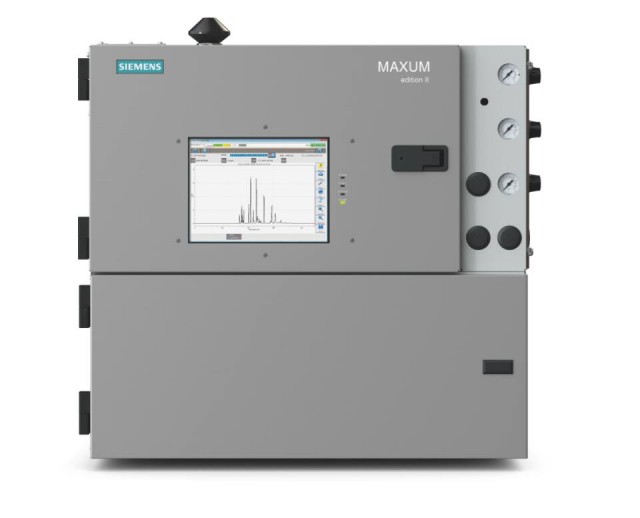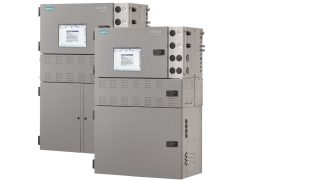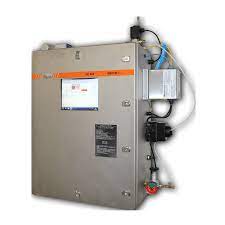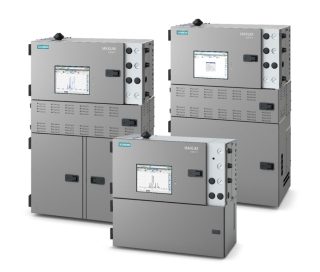Modular ovenoven
Process Analytical
Buniness Unit Manager : Mr. Pakpoom Noi-u-thai
Tel : 081-874-5764
E-mail : pakpoom@pico.co.th
Admin
Tel : 02-939-5711 ext. 456
E-mail : process@pico.co.th
Background
Since its market introduction over 15 years ago, the MAXUM gas chro-matograph (GC) has continually led the way in analytical measurement innovation – with expanded capabili-ties like those of the modular oven option, a popular addition to the MAXUM GC analysis platform.
Ideally suited for a wide range of analytical measurement applications, the modular oven configuration fea-tures completely self-contained chro-matograph modules that simply need to be snapped into place. Module replacement has never been easier or faster, dramatically lowering operation and maintenance costs as well as greatly minimizing downtime. As yet another excellent example of the Siemens commitment to the MAXUM GC platform, this oven option is fully compatible with existing MAXUM systems, supporting seamless data communication and reporting.
Key features
The modular oven MAXUM GC is available in a variety of configurations. It can be equipped with up to two modular ovens mounted under the electronics. Each oven can be ordered with either a small or a large sized compartment. Whereas the small compartment is designed for a single GC module, the large one can accom-modate either two single modules or one double module.
Benefits
• Modular, highly flexible design
• Minimal installation costs
• High analytical availability
• Low cost of ownership
• Suited for process environments
Fully certified: CSA, ATEX, IECEx
• Single GC module: one model 50 valve, chromatography columns and one thermal conductivity detector block
• Double GC module: up to three model 50 valves, chromatography columns and two thermal conductivity blocks
Let’s have a deeper look into the details
odular oven option offers tre-mendous value to users interested in a gas chromatograph designed for great utilization flexibility, reduced installation costs, high availability and low long-term cost of ownership.
• Modular, highly flexible design
– the new configuration features completely self-contained chromato-graph modules enabling quick and easy deployment along with highly flexible utilization.
• Reduced installation costs – with its small footprint, the analyzer’s shelter installation requirements are low, even fitting into simple field mount cabinets. Its power and utility consumption is also very low.
• High analyzer availability – the entire analytical module can be removed with a single bolt and replaced in minutes, keeping down-time low for mission critical tasks such as measurements to satisfy environmental mandates.
• Low cost of ownership – the modu-lar design of the MAXUM GC helps to reduce the level of training needed for maintenance. The analyzer also has fewer electronics and thus lower spare part requirements.
Furthermore, the high sensitivity TCD can perform many of the appli-cations that require more expensive flame ionization and flame photo-metric detectors.
Incorporating all of the system control (SYSCON) functionalities of other MAXUM GC configurations into its CIM electronics, the modular oven option eliminates the need for a sepa-rate system controller. Its simplified design reduces maintenance costs and also lowers the overall cost of owner-ship. The circuitry connecting the modules is certified as intrinsically safe, further simplifying module access and removal.
Forming the centerpiece of the MAXUM modular oven gas chromatograph is the thermal conductivity detector (TCD), which detects the actual com-ponents being measured. Combining state-of-the-art, low-noise electronics with a thermally optimized detector design, the MAXUM modular oven GC delivers highly reliable measurement performance for which typically more complex flame ionization detectors (FIDs) or flame photometric detectors (FPDs) are required. For many appli-cations, the thermal conductivity detector identifies components down to the 1 part-per-million (ppm) levels, even lower in some cases. The result is an oven analyzer solution with simple maintenance requirements and low operating costs.
In short: The ideal process analysis solution for years to come.




